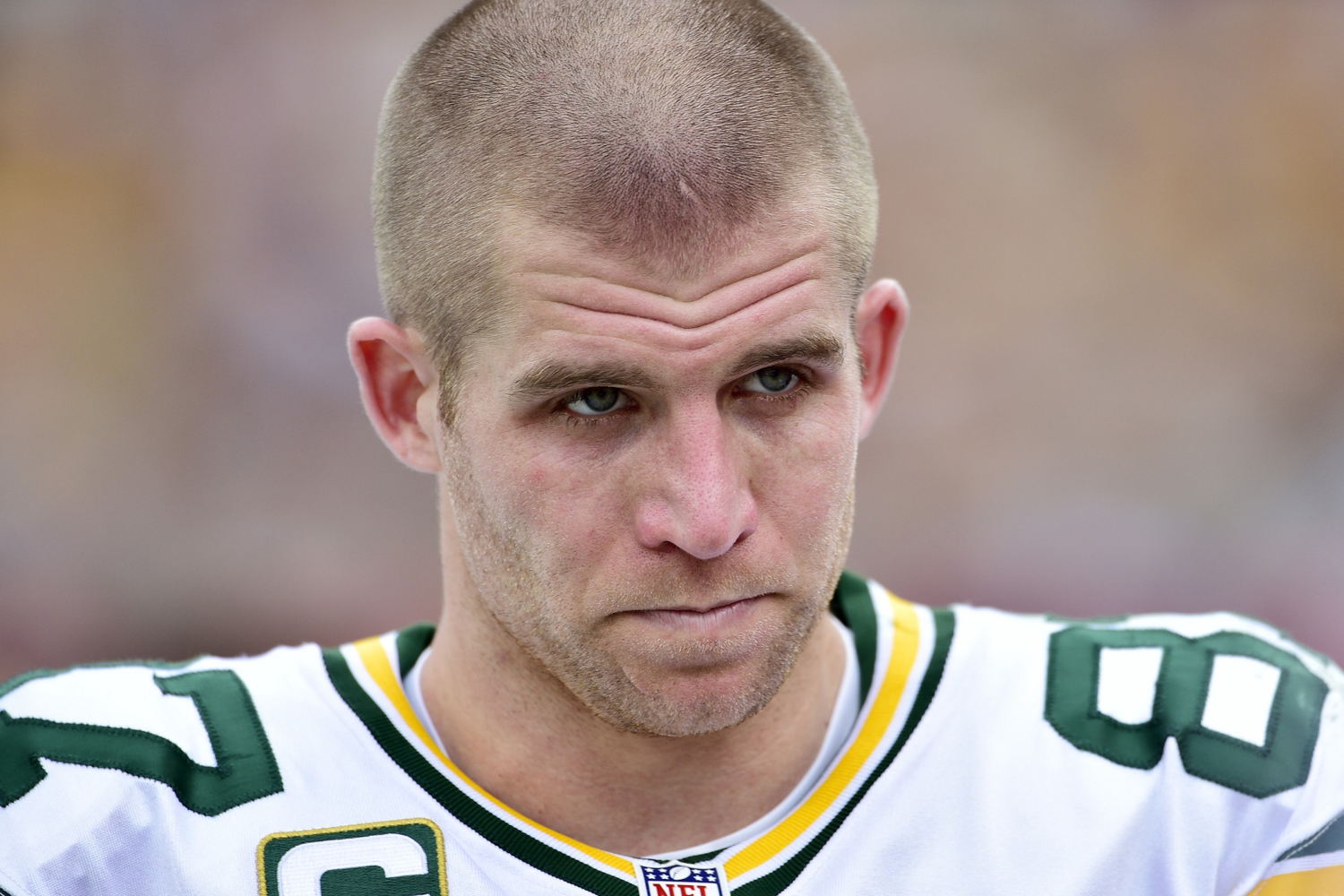
Time To Change Injury Season?
With Jordy Nelson’s season-ending ACL tear adding to the ever-growing tally of players seeing their campaigns end before they’ve even begun, Mike Carlson has a simple answer: change the exhibition season.
As you’re probably aware, the NFL seems to be moving inexorably towards a longer season. The figure most often suggested is 18 games, and this being America more is presumed to always be better (and more profitable). Call me old-school, which I certainly am, but for once there is an area where even the league office agrees with me that more is not better. Because the solution most often suggested to make room for the extra games generally involves a trade off of two exhibition (sorry, crucial pre-season) games.
The question we need to ask is what is pre-season for? And the problem is that the two biggest reasons are sometimes contradictory. Pre-season is the time teams prepare for the regular season, rehearsal as it were. But to continue the theatre metaphor, at the same time it’s when auditions take place. So think of a play doing its pre-West End run while still letting actors try out for leading roles.
In the old days, things were easier. Rookies, no matter how exalted their status, were generally kept in place, there was usually relatively benign hazing and jobs were protected fiercely by veterans. Teams needed long exhibition seasons because the teams, who didn’t have the swathes of television and ancillary revenues the league enjoys today, needed to generate more cash, and the players, who weren’t paid enough to train year-round, needed to play their way into shape.
There is a significant difference between ‘shape’ and ‘game shape’, which is one of the paradoxes of the injury arguments, pro and con, over pre-season. Increasingly, pro-football players, especially at the skill positions, are like thoroughbred horses and even the dray horses in the line are now carrying far more muscle mass than their connective tissues (ligaments, tendons, cartilage) were designed to handle. The result is a rash of injuries in the first days of non-contact training camps (see Dante Fowler, or Kelvin Benjamin). We pay a lot of attention to the increase in size and strength when we’re looking at concussions, and the impact ration of mass times speed, but this part of the injury equation is just as important, and my gut feeling is that players need time to acclimatise to contact on a relatively gradual basis.
The real question is whether they need four games, and whether we, as fans, need them either. When I was in college we would generally have about a month to prepare: a week of double sessions before classes started, then three weeks which would include two scrimmages, the first controlled and the second in game conditions. When I covered NFL Europe, they had about the same time, with far more evaluation to do because the rosters were virtually all new each year, and they would have two weekends of game-condition scrimmages with all six teams, and other scrimmages during their three weeks of camp.
I suspect something similar is on the cards for the NFL. The league knows it cannot sell pre-season tickets except by including them in season-ticket packages, making it mandatory. The teams don’t really know what to do with the games: stars barely appear in Week 1, play a bit in Week 2, go for real in Week 3 and avoid injury in Week 4, but those definitions are very flexible depending on the team. Remember, this is a league where regular-season contests can become meaningless when teams have locked into their playoff positions, so why would a coach who rests his starters then want to play them in a game that is truly meaningless?
We all should know by now not to read too much into pre-season preformance, but that doesn’t stop the Twitterverse from exploding with every game. There are always the 100-yard receivers or rushers, the 80-yard punt returners and the two-touchdown-passes-in-one-quarter guys you will never hear of again unless you study the agate type of transactions on and off practice squads and the CFL. Many teams try hard to get their guys on the roster bubble into games against the opposition’s best, but too often it’s scrubs against scrubs, and one player’s outstanding performance may be not much more than his opponent’s ticket to arena football.
But around the league in mid-August now, you see teams that are practising together, and drawing standing-room-only crowds. They will play an exhibition game afterwards, but both coaches know they accomplish far more in the joint sessions. Joint practices are not a new idea, nor are controlled scrimmages, but to me they suggest the way forward for the NFL pre-season.
So I have a proposal. First, leave the season at 16 games. It’s long enough. Then let’s cut the pre-season to two games, but allow (in fact, encourage) more controlled scrimmages and joint practices. It would be nice if these stayed free or cheap for fans to attend; it would be a great gesture, especially to those who don’t have season tickets, and teams can also make money off ancillary charges. It would also be very instructive for fans.
They could have one exhibition game after two weeks, and another two weeks later. The second one might be scheduled in neutral sites, even other countries where the NFL wants to explore the fanbase. Coaches could schedule two controlled scrimmages, and perhaps have the option to make the first exhibition a controlled scrimmage as well, especially if they don’t want to go live on special teams. It wouldn’t be the spectacle a pre-season game is now, yet that spectacle is really just buttons and bows. The scrimmages would be a more meaningful competition, which the fans would be likely to appreciate it more, and they wouldn’t be likely to complain if the games themselves weren’t at home. It’s win-win, except no one really cares who wins in pre-season.
This is an edited version of an article that appeared in Issue VIII of Gridiron Magazine. To subscribe to the magazine, and enter the draw to win a trip to the AFC or NFC Championship Game, click here.
